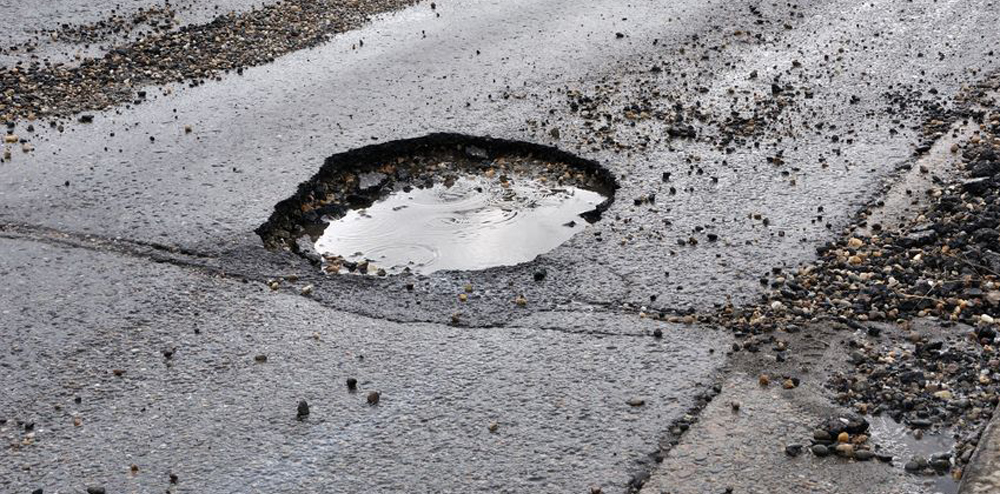Most people will have a pretty good idea that lots of rain means more potholes on our roads. But do you know why that's the case?
Potholes form when the asphalt surface of the road breaks up. This can happen because the asphalt is older and is in poor condition, or when too much water gets into the road's pavement layers.
Potholes can vary in size and shape, but they often have something in common – rain, or more precisely, water. After lengthy periods of rain, like what we've been experiencing, some road pavements become saturated. The water in the pavement is compressed under the weight of traffic and this compressed water pops out any weak point in the asphalt forming a pothole.
Another way they can form is if the asphalt already has some cracks. Cracks make it easier for water to get in and soften the pavement. This leads to more water getting in, more cracking, and the cycle accelerates. Eventually, pieces of the surface will pop out, forming a pothole.
"All this recent wet weather has increased the likelihood that we'll see potholes on roads throughout the Wollongong Local Government Area. Council is aware of this and we're prioritising emergency work to repair dangerous potholes," Wollongong City Lord Mayor Councillor Gordon Bradbery AM said.
"It's going to take some time to get to every pothole on Council roads, especially as we continue to experience wet weather. We do ask for your patience as we work to repair our roads.
"We identify potholes with a mix of community feedback, Council inspections and proactive patrols of our roads. You can do your bit by letting us know of any pothole near you by reporting it online via Council's website."
You can report a pothole online via our website.
We fix potholes using industry standard methods. There are two main ways we can fix a pothole, with hot mix asphalt or cold mix asphalt.
Hot mix asphalt is a higher strength and more durable product which provides a long-term repair to potholes. Council has three "tar trucks" which are specially designed trucks that can transport hot asphalt across our city.
When fixing a pothole, we start by cutting up the existing hole to form defined edges and clear it of loose material. We apply a bitumen emulsion to the base of the hole as a bonding agent, this ensures the hot asphalt will stick to the road. Depending on how deep the hole is, we then use numerous layers of asphalt, with the finishing layer left slightly raised to allow for natural compaction from passing vehicles.
This method can take some time especially as it requires the road to be completely dry to work. When we're experiencing lots of rain, this can be difficult to achieve.
In a pinch, we can also repair a pothole by using bags of cold mix asphalt that is malleable at room temperature. This is a temporary measure, that only lasts for a short period of time, especially during wet weather. However, this approach is useful in situations where emergency or short-term pothole repairs are required. We will revisit the site at a later date to complete any additional works to repair the road.
"When it comes to choosing the best method to repair a pothole, our crews make a decision on the go based on the state of the road and weather conditions," Cr Bradbery said.
"In conditions like what we've been experiencing, with incredible amounts of rain hitting our roads, we sometimes have to take temporary measures to fix unsafe potholes. Once weather conditions improve, we're able to return and complete repair work at a later date."
Our Customer Service team are here to help and are prioritising urgent calls. For a non-emergency issue to report such as a pothole, fallen tree on public land or long grass make sure to report it online.







